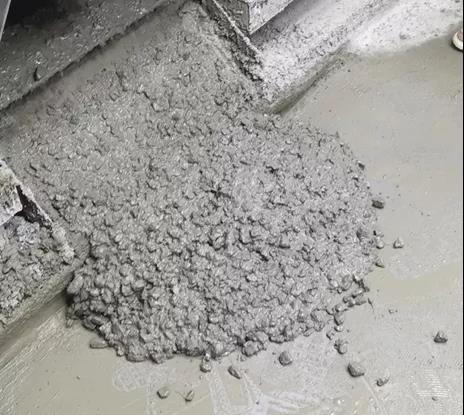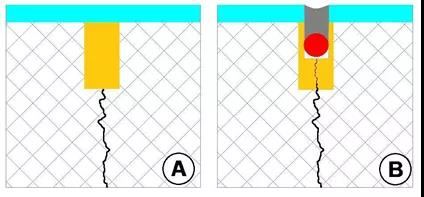confirm the thickness of the weak layer. If it is slightly sanded, only mechanical methods such as grinding and milling to remove the scum layer on the surface. If the sand layer is thick and the surface is mechanically processed to expose the concrete aggregates, use the machien to strenthen the ground well, and then according to the material characteristics of the surface layer construction, confirm whether to throw sand and increase the surface roughness and improve the adhesion between the floor surface and the foundation. The most important thing is that the concrete flowing is good (as shown in the figure below).

Another thing is that we want the concrete slump to be as small as possible, but this often causes complaints from workers. Therefore, under the premise of ensuring good workability of the concrete, the concrete slump of dump paving is generally controlled. At 140-160mm, the pumped concrete is controlled at 160-180mm.
Cracking
The causes is complex. The reason may be that the quality of concrete is not strictly controlled, or the curing is not in place, or the foundation is unstable, and there is no separation between different structures. According to the crack form, there are surface cracks, irregular cracks, and regular cracks. Cracks are usually harmless and are caused by the drying shrinkage of the concrete floor surface layer and do not need to be treated; irregular cracks are caused by the plastic shrinkage or drying shrinkage of the concrete. Early cutting and adequate curing can reduce the risk. Regular cracks maybe due to large temperature changes (such as cold storage doors), improper treatment of local foundations, etc. Such cracks are generally traceable and can be prevented in advance.
How to deal with:
Before preparing to repair the crack, confirm the location and shape of the crack, whether it is a static crack or a dynamic crack. For static cracks, use suitable repair materials (Figure A). For dynamic cracks, it is necessary to reserve space for the movement of the cracks, so as to go with the flow, and let them go (Figure B).

For more information about concrete floor and concrete floor grinding, contact us WWW.SANGTOOLS.COM
24/7 via fax, email or phone.